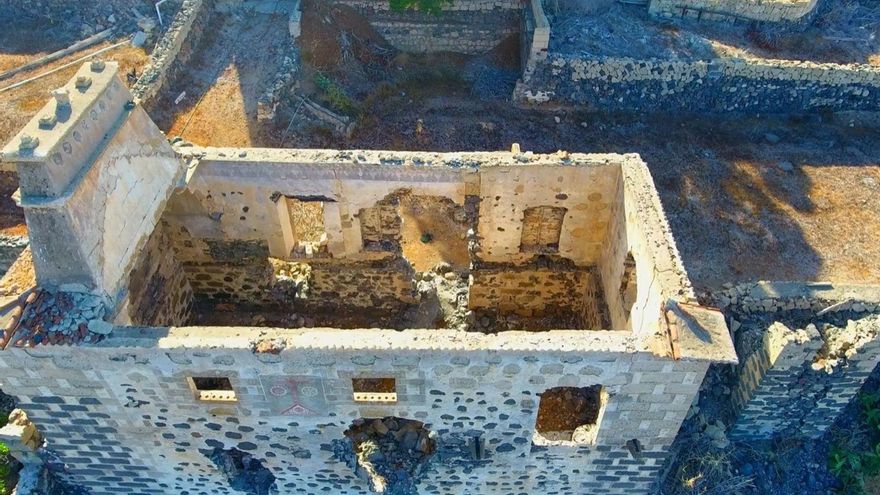
Asset of Cultural Interest since 1986, a year ago the City Council initiated the file to convert the Casa Fuerte into municipal property. The idea is to respect the original construction as much as possible as part of the complex that includes Plaza de España, Calle Grande, the Auditorium, the Town Hall, the old Franciscan convent of Nuestra Señora de Guadalupe and San Pablo, and the Barranco del Infierno.
On May 27, 2022, the Plenary of the Adeje City Council approved the implementation of the expropriation file for Casa Fuerte. The day before yesterday, it took another step to expropriate the land adjacent to this property declared Asset of Cultural Interest (BIC), with the category of Monument, in 1986. It is a notable advance towards «the rescue of the history of Adejera, which has an important part in the Casa Fuerte. We must rescue it to preserve it so that future generations can enjoy it,” says the mayor, Jose Miguel Rodriguez Fraga. The idea is to respect the original construction as much as possible, in line with international regulations for the preservation and restoration of heritage.
To reach the agreement to expropriate the surrounding land, the government negotiated with the owners, who recognize “the need to transfer the assets to the Adeje City Council,” according to the Town Hall itself. In return, The Administration agrees to pay for the land “and to carry out, at its expense, the adaptation works that are necessary, both in the General Planning Plan and in regards to the public domain for its common use by citizens”.
The Casa Fuerte is one of the unique elements of Adeje, but today it presents a very notable detriment, with the collapse of roofs, deterioration of construction stones and the disappearance of sgraffito and idols of great historical and artistic value. The interventions carried out with inadequate procedures and materials that patch up, distort and decontextualize the value of the monument contributed to the devaluation of this Asset of Cultural Interest.
This commitment of the City of adeje The decision to convert the Casa Fuerte into public property is also based on the conviction of the municipal authority that a part of the future of the historic center of Adejero passes through this place, located in an environment of enormous value that makes up the Casa Fuerte itself, the Plaza de España, Calle Grande, the Adeje Auditorium, the Town Hall, the old convent and the Barranco del Infierno.
the new set
In this area, the Consistory plans the Semi-pedestrianization of Calle Grande. It is about “promoting the permeabilization of the entire environment” and turning it into a space for easy neighborhood transit between the tourist and historical areas. This communication will contribute to «make known and value the history and culture of Adejeas well as diversify the economy and generate opportunities and wealth on equal terms for all the nuclei of the municipality.
The idea is to respect as much as possible the original construction of the Casa Fuerte, as established by international regulations for the preservation and restoration of heritage. In addition, the consistory considers that a point of tourist interest will be generated.
Built in 1556, it became, for three centuries, the political, economic and social center of the jurisdiction of Adeje, under the noble regime of the Pontes. It is a fortified residence, a mixture of a country house and a fortress, with an almost square floor plan, occupying 7,200 square meters. The Strong House consisted of a castle and a tower, warehouses, granaries, a stable, a blacksmith shop, a bakery, ovens, houses for servants and administrators, an oratory and a main palace.
The Strong House marks the history of the colonization of the southwest of Tenerife. It constituted the economic center of the area in which agricultural, livestock-raising economic activities were carried out -with reed beds and horticultural products, as well as goat, cattle, mule and camellar herds-, of an extractive and transforming nature, as well as logging to obtain firewood. and the cultivation of cereals was practiced.















